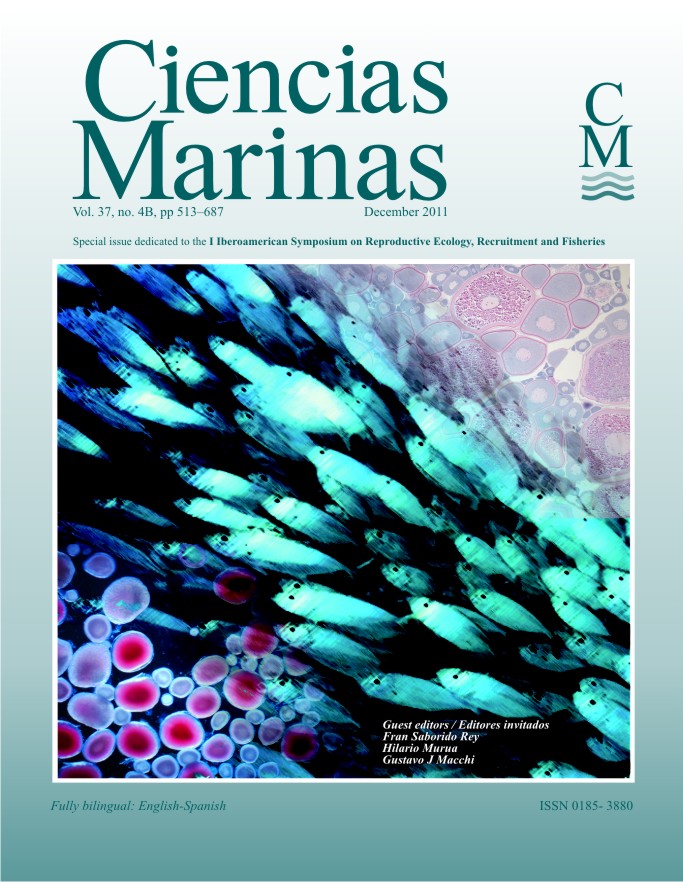Distribution and behavior of Argentine hake larvae: Evidence of a biophysical mechanism for self-recruitment in northern Patagonian shelf waters
Main Article Content
Abstract
It has been proposed that vertical movements of planktonic organisms coupled to a horizontally or vertically stratified circulation pattern could describe a retention mechanism, with ecological advantages such as favoring recruitment success. The Patagonian stock of the Argentine hake Merluccius hubbsi spawns mainly from January to February in relation to a highly productive tidal frontal system. Although retention of fish eggs and larvae has been previously hypothesized for this system, it has not been fully proven and its mechanisms have not yet been proposed for hake early stages. To better understand the physical and biological processes involved in the survival and distribution of hake larvae, we focused on transport features and associated larval behavior governing the retention of larvae in the spawning area and their subsequent distribution to settlement and nursery grounds. To test this hypothesis at appropriate spatial and temporal scales, we analyzed acoustic records to describe vertical and horizontal distribution patterns of hake larvae, discrete plankton samples to confirm the identity of acoustic targets, and outputs from a numerical circulation model to estimate current patterns in the region during the hake spawning months. Coinciding with the development of a functional swimbladder, hake larvae of 4 mm and larger showed a strong vertical distribution pattern associated with a sound scattering layer migrating from the thermocline during the night to near-bottom depths during the day. This diel vertical migration pattern was associated with the circulation structure, equivalent to a two-layer flow, indicating a recirculation pattern in the vertical plane. The retention of early larval stages in the spawning area was evident from the acoustic data, indicating a persistent location for the bulk of hake larvae at the main spawning ground during summer months. The distribution extends to the rest of the nursery grounds as the breeding season advances in agreement with the general pattern of middle shelf bottom circulation vectors produced by the numerical model. The results are discussed within the framework of Bakun’s fundamental triad, identifying its elements. In addition, a conceptual model for the main biophysical coupling processes during the early life history of M. hubbsi is proposed in order to gain insight about the recruitment mechanism of this species.
Downloads
Article Details
This is an open access article distributed under a Creative Commons Attribution 4.0 License, which allows you to share and adapt the work, as long as you give appropriate credit to the original author(s) and the source, provide a link to the Creative Commons license, and indicate if changes were made. Figures, tables and other elements in the article are included in the article’s CC BY 4.0 license, unless otherwise indicated. The journal title is protected by copyrights and not subject to this license. Full license deed can be viewed here.

